Excelling at Combinational Play Jacob Aagaard First published in 2004 by Gloucester Publishers plc (formerly Everyman Publishers plc), Northburgh House, 10 Northburgh Street, London EC1V 0AT Copyright 2004 Jacob Aagaard with Nikolaj Mikkelsen. The right of Jacob Aagaard to be identified as the author of this work has been asserted in accordance with the Copyrights, Designs and Patents Act 1988. All rights reserved. No part of this publication may be reproduced, stored in a retrieval system or transmitted in any form or by any means, electronic, electrostatic, magnetic tape, photocopying, recording or otherwise, without prior permission of the publisher. British Library Cataloguing-in-Publication Data
A catalogue record for this book is available from the British Library. ISBN 1 85744 345 4 Distributed in North America by The Globe Pequot Press, P.O Box 480,
246 Goose Lane, Guilford, CT 06437-0480.
All other sales enquiries should be directed to Everyman Chess, Northburgh House,
10 Northburgh Street, London EC1V 0AT
tel: 020 7253 7887 fax: 020 7490 3708
email:
website: www.everymanchess.com Everyman is the registered trade mark of Random House Inc. and is used in this work under license from Random House Inc.
E VERYMAN C HESS S ERIES (formerly Cadogan Chess)
Chief advisor: Garry Kasparov
Commissioning editor: Byron Jacobs Typeset and edited by First Rank Publishing, Brighton.
Cover design by Horatio Monteverde.
Production by Navigator Guides.
Printed and bound in Great Britain by Biddles Ltd. CONTENTS
BIBLIOGRAPHY Books Encyclopaedia of Chess Middlegames , Krogius, Livsic, Parma, Taimanov (Informant 1980) Encyclopaedia of Chess Combinations , (Informant 1984) Sicilian Sacrifices , Levy (Batsford 1980) John Nunns Puzzle Book , Nunn (Gambit 1999) Solving in Style , Nunn (Gambit 2002) The Endgame University , Dvoretsky (Olms 2002) Test Your Endgame Ability , Speelman (Batsford 1988) Creative Chess , Avni (Everyman Chess 1998) School of Chess Excellence II, Tactical Play, Dvoretsky (Olms 2002) School of Chess Excellence III, Strategic Play, Dvoretsky (Olms 2002) PREFACE This book has been a long time in coming. Actually, after finishing my first book back in 1998 I wanted to write a book like this, but it was turned down by my publisher at the time, Gambit. On their request I instead wrote a book on the Sveshnikov.
Now, finally, I have been allowed to publish this book, a book I have been working on for 12 months on and off, collecting material, analysing, commentating, losing interesting articles, cursing my computer and especially my own ability to operate it (do not ask about backup copies; when you overwrite your backup copies you lose your sense of irony!). But eventually I made it, and here it is! Because I was relatively overworked during the summer of 2003, I brought in Nikolaj Mikkelsen, a talented 15-year-old with the rarely seen ability for dedicated work. He collected many positions and discarded even more after hours behind the computer, and was overall a great help. So, besides a decent cut in the small fee, I felt that his name deserved to be attached to this book. Thank you Nikolaj! The positions in this book have mainly come from my database of 2.8 million games compiled from many sources (mainly ChessBase). Many of the positions have previously not been noticed as anything special and were found by us.
But we would be lying if we did not acknowledge a great debt to a number of ChessBases regular annotators, including Har Zvi, Tyomkin, Atlas, Bnsch, Gofshtein and Tsesarsky, as well as the many players who played the games themselves. The annotations here are my own, with no exceptions, but to go through already analysed games makes it easier to single out interesting tactical moments, and therefore it is important for me to acknowledge the great work of other people. Many improvements were found in existing analysis, and considerable analysis was found to be incorrect after silicon scrutiny. But it was still priceless to have a starting point like this. Together with Nikolaj, my greatest helper has once again been Danny Kristiansen, who has found dozens of both minor and major flaws in the manuscript and asked me to correct them. I am deeply grateful for his help and think I would somehow feel lost without it.
Thanks Danny! Jacob Aagaard,
Albertslund, Denmark,
March 2004 INTRODUCTION What is this Book about? This is a training book for development of both combinational vision and combinational calculation. More simply, combinational skills. I have divided the positions into two parts: Pattern Combinations The main idea here is that these positions should be able to be solved relatively easily. The lines are generally without too many branches and should not involve too much calculation. This does not mean that they are easy, but that its more important to find the combinational idea than to calculate the correct lines against all possible defences. Calculation Combinations These are harder (some of them actually really hard).
At times they have many branches, and these are long and winding. I recommend that these positions should be played out against a computer program. The computer will not always understand the solution, but they are strong and reliable defenders. The only hazard, which is a real practical problem, is that the computer would rather lose a queen than allow a brilliant 5-move mating combination, and this can spoil some of the fun. However, if you do not understand why a computer plays something seemingly silly, then you immediately have a fresh exercise on your hands. It must be said that the division of the two blocks was to some extent arbitrary.
Some exercises in the pattern collection could easily have been found in the calculation collection. The general level of difficulty rises throughout the 500 combinations, although the most difficult exercises might well be numbers 290, 292 and 294. What does White to Play and Win really mean? When collecting exercises for this book, I decided to avoid what Chess Informant and other publications of tactical exercises have included at times. Namely, puzzles like White to play and gain a large advantage and similar. To actually gain a winning position can mean many things. My agenda is not that of aesthetics, but that of improving the tactical skills of the practical player.
One of these skills is also to determine when a position is winning and when it is not. So winning can mean winning a pawn for no compensation , or gaining an absolutely winning positional advantage (as with only one case out of 500 in this book), or it can simply mean checkmating in the classical aesthetic way as in the following example clipped from Informant 87 . 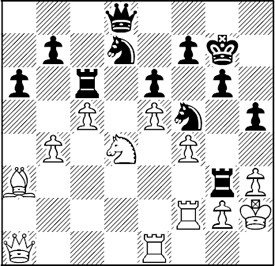 Omer Ibrahim-Ibarra
Omer Ibrahim-Ibarra
Cuba 2003 1...Nxd4! 2 Kxg3 2 Qxd4 Rxa3 and Black has won a piece (3 Rd1 is answered by 3...Qh4). 2...Qh4+!! 3 Kxh4 Nf5+ 4 Kg5 Nf8 0-1 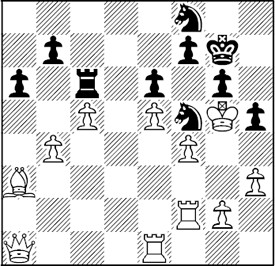 White is mated with 5...Nh7. Everybody loves this kind of stuff (I hope!). But how important is it for the practical player? Well, of course solving such exercises will never make you weaker, but they should not stand alone.
White is mated with 5...Nh7. Everybody loves this kind of stuff (I hope!). But how important is it for the practical player? Well, of course solving such exercises will never make you weaker, but they should not stand alone.
For that reason I have collected examples with some degree of tangled complexity over ones with aesthetics solutions. In this book, which is a training manual, I have collected examples from practical play based on their correctness more than anything else, and also on their instructional value. All I hope for is that my evaluation in that direction has been good and that this book will help you develop your tactical chess. Why another Book on Combinations? This is one of the first questions I had to answer when I sat down to write this book. Was it really just a waste of time to produce a new collection of combinations? I had several reasons why I found it acceptable to answer this question in the negative. First of all, there have been more games available over the last 10-15 years than in any other period of chess history, and the density has increased even more so over the last five years.
Next page
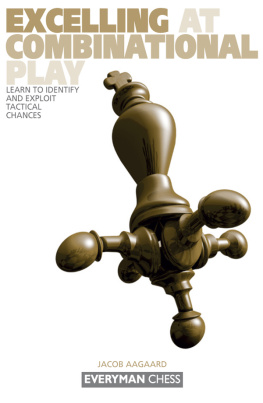
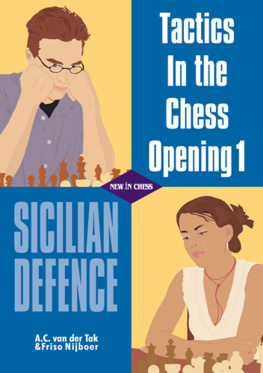
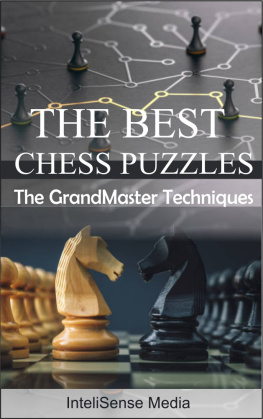
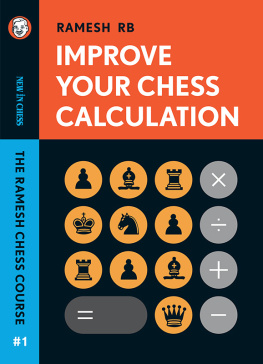

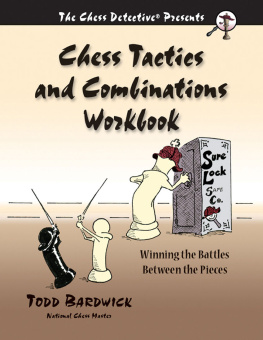
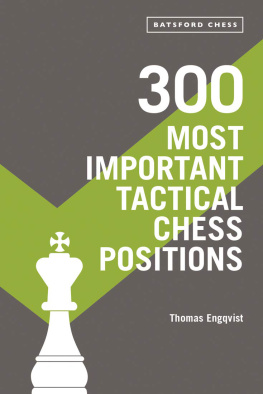
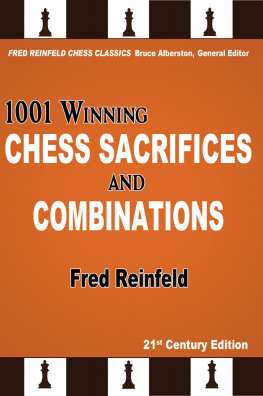


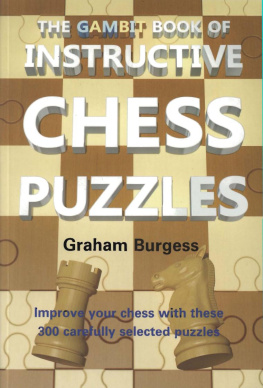
 Omer Ibrahim-Ibarra
Omer Ibrahim-Ibarra White is mated with 5...Nh7. Everybody loves this kind of stuff (I hope!). But how important is it for the practical player? Well, of course solving such exercises will never make you weaker, but they should not stand alone.
White is mated with 5...Nh7. Everybody loves this kind of stuff (I hope!). But how important is it for the practical player? Well, of course solving such exercises will never make you weaker, but they should not stand alone.